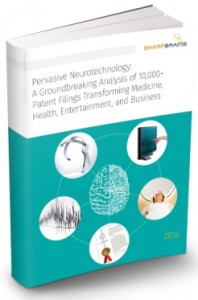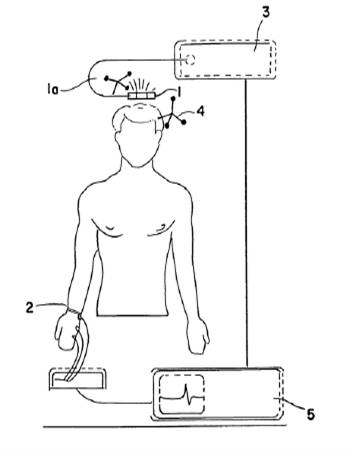The evolution of transcranial magnetic stimulation (TMS): Key Neurotech Patent #23
Today we are sharing a 2006 patent assigned to Brainlab. (As mentioned, we are featuring a foundational Pervasive Neurotech patent a day, from older to newer by issue date)
U.S. Patent No. 7,008,370: Method and device for transcranial magnetic stimulation.
- Assignee(s): Brainlab Ag
- Inventor(s): Phillip Tanner, Andreas Hartlep, Henrik Wist, Kerstin Wendicke, Thomas Weyh
- Technology Category: Transcranial Stimulation
- Issue Date: March 7, 2006
SharpBrains’ Take:
Transcranial stimulation of targeted regions with automated means requires the automated system to have knowledge of the location of the patient’s targeted brain region in reference to the device inducing brain activity. The ‘370 patent discloses a means for knowing where the stimulation device is located through a marker that may be tracked by a tracking system. While robotic coordinate systems that consider robotic arm lengths and rotational angles may allow for an alternative means of automated tracking, the ‘370 patent covers substantially all applications of tracking of stimulation devices (i.e., the induction devices) through commonly employed stereotactic systems that require a detectable marker for location feedback. The broad claim coverage of marker-based tracking as applied to non-invasive stimulation is a significant factor in making the ‘370 patent a key non-invasive neurotechnology patent.
Abstract:
The invention relates to a method for stimulating specific areas of a brain using an induction device, comprising the following steps: recording the spatial structure of the head, in particular the brain; generating a simulation model of the induction device; and arranging the induction device relative to the head such that a specific area of the brain determined by means of the simulation model of the induction device is stimulated by a current flowing in the induction device, as well as to a method for stimulating specific areas of a brain using an induction device, comprising the following steps: recording the spatial structure of the head, in particular the brain; generating a simulation model of the head; and arranging the induction device relative to the head such that a specific area of the brain determined by means of the simulation model of the head is stimulated by a current flowing in the induction device, as well as to a device for stimulating specific areas of a brain using an induction device connected to a marker.
Illustrative Claim 1. A device for non-invasively stimulating specific areas of a brain within a head, said device comprising:
- a non-invasive induction device;
- at least one marker connected to the non-invasive induction device, said at least one marker being detectable by a tracking system.
 To learn more about market data, trends and leading companies in the digital brain health space –digital platforms for brain/ cognitive assessment, monitoring and enhancement– check out this market report. To learn more about our analysis of 10,000+ patent filings, check out this IP & innovation neurotech report.
To learn more about market data, trends and leading companies in the digital brain health space –digital platforms for brain/ cognitive assessment, monitoring and enhancement– check out this market report. To learn more about our analysis of 10,000+ patent filings, check out this IP & innovation neurotech report.



